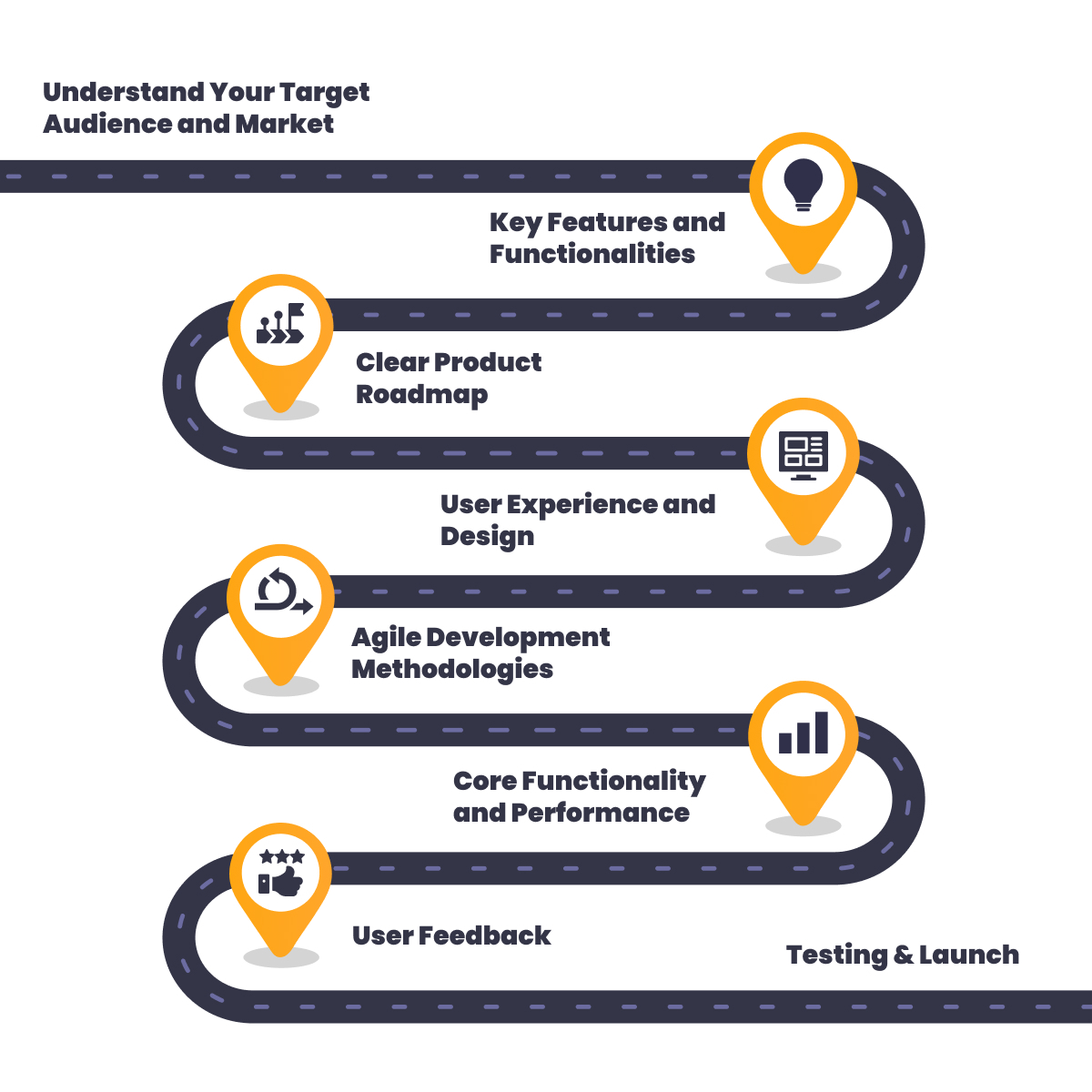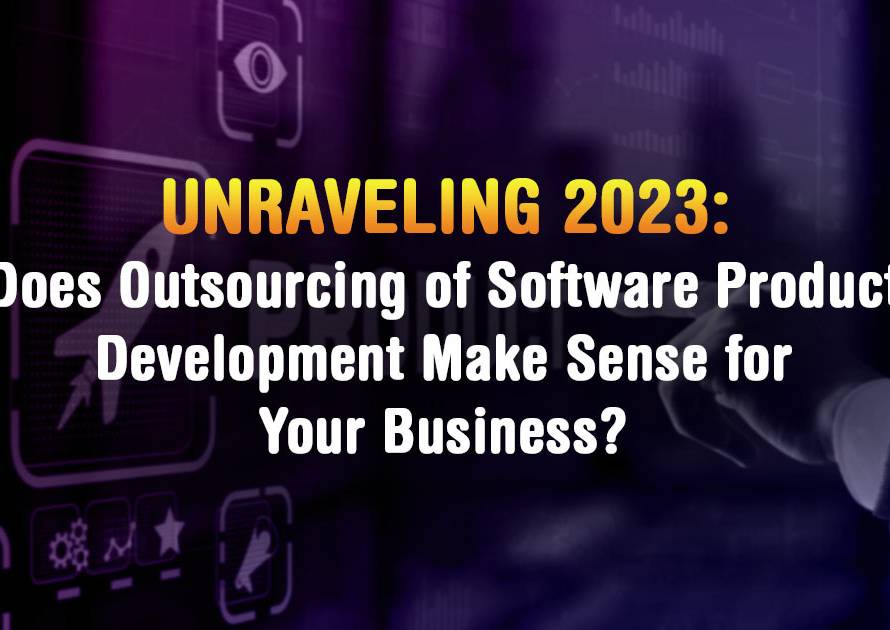Developing an ideal MVP in 2023 can be as complicated as exploring blindfolded in a labyrinth. However, do not worry; we are behind you. We know the struggle of building an MVP – juggling between function/design, usability, and affordability barriers.
In this blog, we serve you with the best tips to guide you in cutting through the clatter and creating a viable MVP that appeals to your target market. Everything from pinpointing the essential attributes to locating an adequate development team is in our court.
Tips to Build the Right MVP in 2023
Understand Your Target Audience and Market
It is important to ensure that you undertake thorough research about the market before going into MVP development. Carry out intensive marketing studies to determine popular trends, customers’ problems, as well as possible rivals.
Describe who is your ideal customer or prospect; demographics, preferences, etc. You will use this knowledge to determine which features to include in your MVP so that they address a genuine problem.
Prioritize Key Features and Functionalities
Not all features are equal. The focus should be on what functions are fundamental and will benefit the end user most. Start with identifying the necessary characteristics of your MVP that are consistent with the central goal.
Identify “must-haves” features and the “add-on” features which can be included in further iterations. It makes sure that all resources are concentrated in a specific area.
Create a Clear Product Roadmap

The roadmap forms a guide that helps you during the product development process. It includes a roadmap of phases, milestones, and objectives from the inception of MVP through to market release. Design a development process consisting of small sprints, each of which has deliverables.
The roadmap allows one to have access to resources, set practical deadlines, and keep track of advancement on the way to obtaining an MVP product.
Build a Strong Development Team or Partner
It is vital to select, in this instance, a suitable development team or a partner for the construction of your MVP. Assess the costs involved, the talent required, and the project’s magnitude and determine whether to develop an in-house squad or outsource for the development.
Choose competent and credible developers or firms that have successfully launched an MVP before. It is crucial for effective communication and collaborative activities leading towards development success.
Emphasize User Experience and Design
A good user experience has become a vital component for any successful MVP. Ensure you come up with a clear, simple, and easy-to-follow user interface that will take customers through the product.
We conduct usability testing in order to collect early opinions and amend them as required. Ensure the MVP is easy to use by people with different needs. The basis of positive user engagement and adoption is a great UX.
Implement Agile Development Methodologies
Flexibility also entails using agile methodologies like Scrum and Kanban that allow open communication among all team members during their development processes. Divide the project into mini-projects that are shorter than two to four weeks for each Sprint.
Reassess objectives often, modify according to feedback, and amend priorities of features regularly as necessary. By employing an iterative approach, the MVP can continue to adjust to the changing requirements of users and dynamics in the markets.
Focus on Core Functionality and Performance
A smooth implementation of the core functions is key to MVP’s success. Make sure that the core purpose of the product is achieved perfectly. For optimum performance, responsiveness, and reliability. Fix major bugs and problems swiftly, in order to avoid inconveniencing users. First, make sure that you prioritize stability in order to create confidence and trust among your first users.
Gather and Incorporate User Feedback
Feedback from users is a treasure chest of ideas that can be used to improve the MVP’s quality. Carry out beta testing in a small group of users for more realistic input. Additionally, perform some surveys, user interviews, and data analysis to understand the users’ behavior and preferences thoroughly. To integrate improvements on a continuous basis.
Plan for Scalability and Future Growth
Identify potential scaling issues while developing your MVP. Develop a flexible infrastructure that will be able to cope with additional traffic and prospective functionality accession. Explore growth potentials and new functions appropriate for the future outlook.
Therefore, it is important to monitor system performance on a regular basis to ensure you are ready for any upcoming scalability issues with the increasing number of users.
Test, Test, Test!
A successful MVP launch relies on extensive testing. Carry out thorough testing on functionality, compatibility, and security. Carry out stress tests to be sure the system remains stable when it has a heavy load.
Carefully examine the MVP for a variety of specific scenarios and use cases. Identify any potential problems and correct them before releasing the product into the market for a smooth-running system.
Launch and Iterate
Now that the basis is secure, you can unveil your MVP.G Start with a managed rollout, targeted group of people, or specific sector. User monitoring, collecting authentic data about users, and receiving relevant information.
Make use of these insights to guide your next moves. Adopt an iterative attitude whereby you make intelligent choices related to subsequent iterations taking into account the reality of individual user experience as well as dynamism in market trends.
Conclusion
As a non-tech founder, it is not easy to make sense of the challenges associated with MVP in the dynamic technological environment today. However, with these priceless tips at your disposal, you are set to confront the hurdles.
Keep in mind that this is not only a product but also a path to improvement and adjustment. Accept user input, remain adaptive, and maintain your focus. You’ve got this. Now start your success journey through your MVP.
FAQs Related to Developing MVP
What is the significance of an MVP for non-tech founders?
Non-tech founders should have an MVP (Minimum Viable Product) so that they can verify their business concepts using minimal means. This is essential for understanding user needs, increasing the initial momentum of product adoption, and shaping later decisions about product evolution.
How do I choose the right features for my MVP?
Priority should be accorded to features based on their essential functionality and relevance to your targeted audience. Solve your core problems and provide a smooth user experience. Distinguish the “must-haves” and additions to later releases.
Should I outsource development or build an in-house team?
It will vary depending on your specific scenario. Outsourcing may also save money and bring in expert services; however, it lacks control and immediate interaction as an internal organization does. Remember about things like budget, schedule, and future prospects.
How do I gather and incorporate user feedback effectively?
Conduct a pilot run with some users, and get comments from polls and questionnaires. Consider only the best findings and incorporate them in subsequent cycles. Developing a feedback system that promotes continuous improvements.
What should I consider for scalability in my MVP?
Make your architecture scalable. Ensure that you update your tech stack if more customers come knocking. Think ahead about how to include future scalability. Monitor the performance of the system regularly in order to check for scalability problems when they come up.


